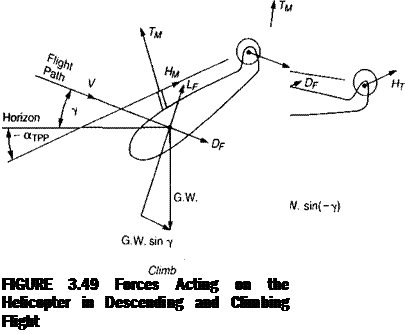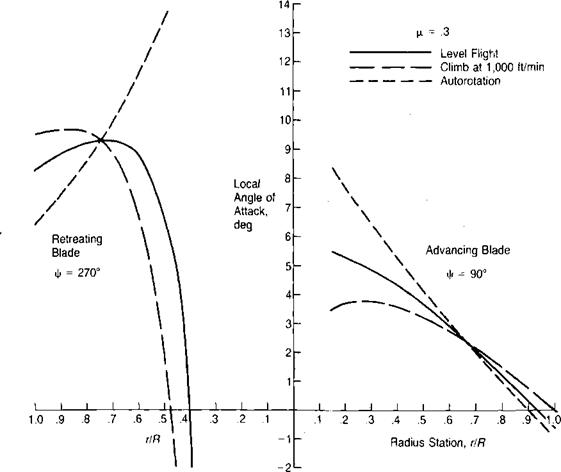Climbs and Descents
The closed-form equations can also be used to calculate the power and trim conditions in a climb or in a descent by incorporating the component of gross
|
TABLE 3.2 Trim Condition Iteration
|
|
weight that acts along the flight path in the equation for the angle of attack of the tip path plane. Figure 3.49 shows the force balance in a descent and in a climb. The equation for the equilibrium tip path plane angle of attack—using the same derivation as in forward flight—is:
![]() PF + HM + HT + G. W. sin у
PF + HM + HT + G. W. sin у
G. W. — LF
where
with the rate of climb, R/C, in feet/minute and the forward speed, V, in feet/second. The trim conditions for the example helicopter at 115 knots (|l = .3)
and at a rate of climb of 1,000 feet/minute have been calculated by the same iterative method used for level flight. The results are shown in Table 3.3 and the angle of attack distribution in Figure 3.48.
The difference in power required to climb compared to that required for level flight could have also been roughly estimated from the rate of change of potential energy:

 |
R/C( GW)
33,000
For this case, the estimated difference in power is 606 h. p., whereas the calculated difference (including the tail rotor) is 668 h. p. Thus the example helicopter has a
climb efficiency of 91%. Most of the loss of efficiency can be attributed to the increased fuselage negative lift while a smaller part is associated with the increased tail rotor H-force. This value of efficiency can be used to make rough estimates of the increment in power required to climb at other weights, rates of climb, and speeds in the neighborhood of 115 knots.












